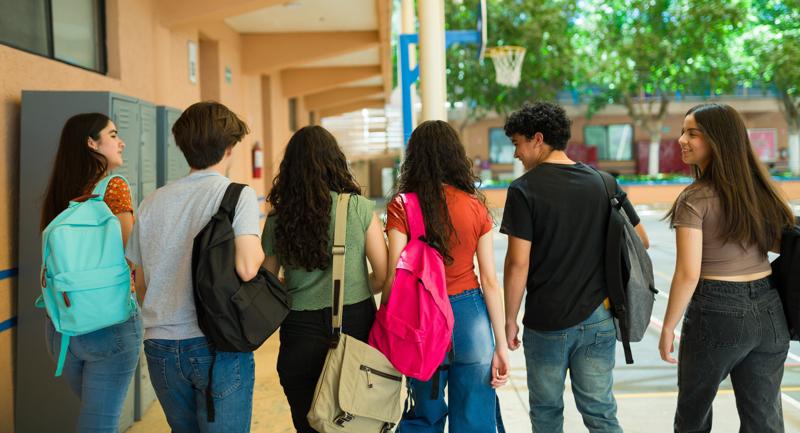In a recent classroom visit, I observed a teacher completing a read aloud. It was just before lunch, and students were getting itchy in their spots on the carpet. In frustration, the teacher stopped reading and told the class, “If I hear one more voice before I finish this book, I am clipping all of you down.”
Did it get quiet? Yes. Were students attentive to the story? Hard to say. It is easy to mistake compliance for engagement. Some were likely thinking about where they were on the clip chart already and what a “clip down” would mean. Some might’ve been focused on sitting still and being quiet instead of truly listening to the story. And others were probably worried about what would happen to them if other students were noisy, and how unfair it would be to be “clipped down” for someone else’s behavior.
Cultivating Psychological Safety
In recent years, clip charts have become a popular way of managing student behavior. Teachers place each student’s name on a clip, like a clothespin, and then the name clips are placed on the chart and moved from level to level throughout the school day. With phrases like “ready to learn” and “making good choices,” these bright, colorful charts are marketed to appear “student friendly.”
Here’s the problem: Public shaming is public shaming, no matter how colorful and bright you make it. Managing behaviors by way of a system that puts students on display with the looming shame of being called out publicly for missteps invariably creates an environment where psychological safety cannot develop. And, if we want learning environments where students can be their authentic selves, take risks, embrace learning from errors and unexpected outcomes, and be vulnerable, then psychological safety is non-negotiable.
Public shaming is public shaming, no matter how colorful and bright you make it.
What is psychological safety? From the work of Amy Edmondson, a Harvard business professor, psychological safety is people’s sense that they are part of a team where “no one will be punished or humiliated for speaking up with ideas, questions, concerns, or mistakes, and that the team is safe for interpersonal risk taking.” Edmondson finds that the optimal environment for learning in the workplace is one with both high psychological safety and high expectations. Sound familiar? The same is true for optimal learning in the classroom.
But My Clip Chart Works!
No one is saying that a clip chart won’t get you compliance. For the most part, it will. But educators should ask themselves, at what cost? For students with anxiety, the worry of where they are on the clip chart can be a pervasive distraction that splits their attention and undermines their learning. For students who rise to the top of the chart, there is nowhere to go but down. Students who struggle with self regulation may find themselves frequently clipped down, knowing that everyone knows they are not meeting teacher expectations.
Generally speaking, students do not spontaneously improve their outcomes by being made to feel bad. Brene Brown teaches that in these moments, students are likely to experience one of two feelings: shame or humiliation. In the case of shame, the student will feel negatively about themselves. In the case of humiliation, the student is likely to feel negatively about their teacher. In both cases, learning is compromised, and not just in the moment. While the specific incident may pass quickly—while the teacher may clip the student down and move on with little further reflection—psychological safety is not a construct that starts fresh every day. Like everything involving trust, it takes ongoing care and cultivation to create and sustain.
Like everything involving trust, psychological safety takes ongoing care and cultivation to create and sustain.
Clip charts are not just problematic for students. Let’s return to our teacher trying to finish her read aloud who told her class that talking by anyone will result in a down clip for everyone. In the event a student did speak, the teacher had backed herself into a corner. She either had to punish the whole class, showing that she is true to her word even at the risk of being perceived as unfair by many of her students, or go back on her word and undermine her own credibility with her class. In the end, no one is well served.
Creating a Classroom Without Clips
Instead of relying on behavioral charts, educators have other options to encourage positive student behavior while simultaneously cultivating psychological safety in their classrooms. The following steps have been adapted from the U.S. Office of Special Education Programs' guidance for supporting and responding to behavior.
1) Start with shared expectations.
Ask students: What does the classroom need to look like, sound like, and feel like for everyone to do their best learning? Students at every age can answer these questions. But here is the part we sometimes miss: What can your students expect from you? What will it look like, sound like, and feel like as you teach and promote those expectations? What is the plan for when students misstep? By proactively addressing how mistakes, unmet expectations, or miscommunications will be handled, students understand that these are normal. Normalizing mistakes promotes psychological safety and makes it easier for students to process and learn from them when they inevitably occur.
Once you have identified your shared expectations, make them visible and permanent. Here is the moment where color, pictures, and fun lettering can make their return. Create an anchor chart, poster, or other form of classroom contract. Have students sign their names and decide where in the classroom is a good place to display the finished product. While you are co-constructing norms and expectations as a class, you are simultaneously building classroom community. Talking about community strengthens community.
2) Teach and model expectations.
Doug Lemov, author of Teach Like a Champion 3.0, refers to “Habits of Attention” and “Habits of Discussion” as foundational aspects of establishing norms and expectations in the classroom. The more explicit we are, the better clarity and shared understanding our students will have. It can be easy to overlook this part, to think that by co-creating a classroom contract or constitution, everyone is on the same page. After all, everyone signed it! Teaching and modeling behaviors are the fine print. Students may say that listening to each other, taking care of the classroom, or using respectful language are important expectations. Defining and describing these will help students to meet those expectations. Get in the weeds and get creative. Let your students perform examples and non-examples, make a graphic, or create stories. And, when your classroom expectations show up in the curriculum, help students to make those connections.
3) Precorrect for desired behaviors.
Precorrection means that before students transition into an activity, you take the opportunity to review expectations. Oftentimes, we do this with young children transitioning from classrooms to hallways or other shared school spaces. It is just as effective for group activities, discussions, problem based learning—you name it. Getting ready to have a serious socratic discussion with your 11th grade honors students? Review the process and the language of good discussion: how to agree, disagree, add on, or question appropriately. Precorrecting is a way of reinforcing behaviors authentically when students need them most. Students can connect the appropriate behaviors with the context and conditions in which they should occur, making it more likely they will 1) perform them in the moment and 2) remember and apply them later.
Precorrecting is a way of reinforcing behaviors authentically when students need them most.
4) Provide productive praise.
Productive praise is praise that is designed to increase the likelihood of repeated positive behaviors. For your praise to be productive, make it timely, authentic, and action-oriented. What could this look like? When students are doing what you want them to do, tell them specifically, in the moment, what it is that they are doing well and why it matters. “Jemma, I appreciate that you put away your social studies materials and got ready for math so quickly and quietly. It shows me that you’re ready and it helps us to get started on time. Thank you!”
5) Use constructive corrections.
Unlike praise, which often identifies the individual student for their behavior, constructive corrections should begin with global prompts or redirections whenever possible. Remember, the minute a student is feeling publicly shamed or humiliated, you have left the learning zone. The student who is still walking around when they are supposed to be seated knows you’re talking to them when you remind everyone that it is time to be back at their seats. When you do need to address a student’s behavior individually, keep the student’s dignity at the forefront. Be brief, be objective, be specific, and then be quick to acknowledge and praise any resulting effort to get back on track. You want the student to hear you, stay focused on the desired behavior, and get back to learning as quickly as possible. “Jemma, you did not put away your social studies materials and get ready for math despite multiple requests to do so, and you were talking with classmates, which distracted them from getting ready for math as well. This meant we lost our focus and time getting into math today. When we transition to science later, I want to see you focused and ready.” Students, like all of us, appreciate clear expectations, boundaries, and consistency. Trust is strengthened by students knowing what to expect, even when this means a constructive correction.
Moving Beyond Management
Creating a classroom culture that engages students, not only in learning but also in the process of creating and sustaining an environment for learning, requires leadership, not just management. Projects are managed. People are led. Every teacher is a leader. The good news is that leadership is a skill set anyone can learn and everyone can improve. Own your role. Ditch those clips and lead on.
Editor's Note: The positions expressed here are by the author and not representative of Ramapo College.








